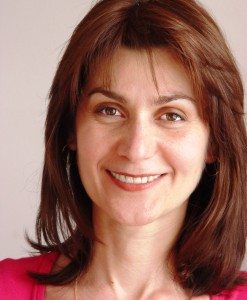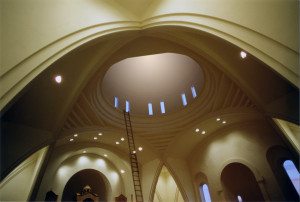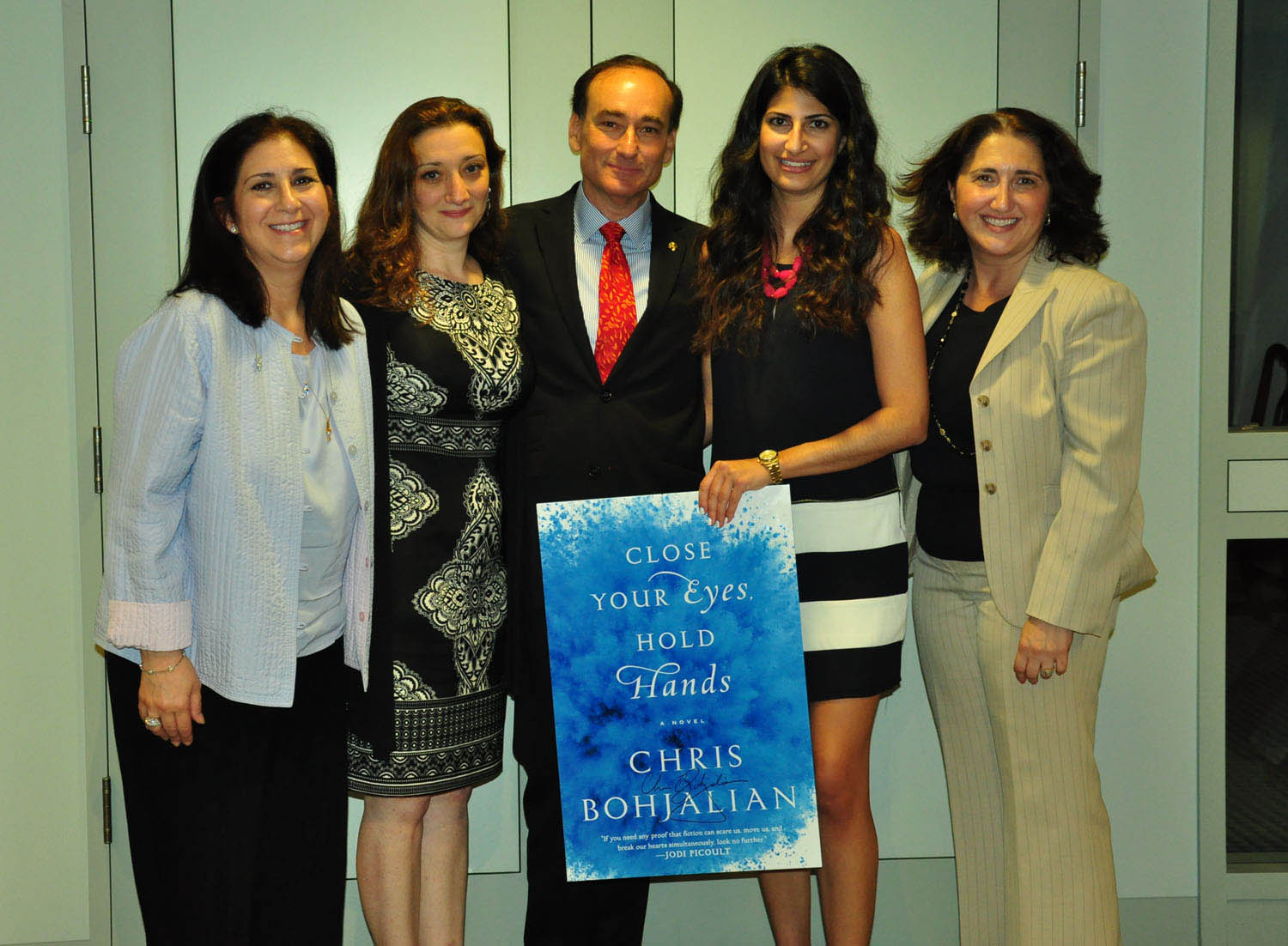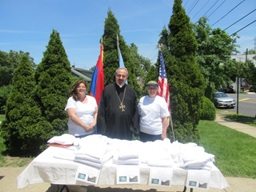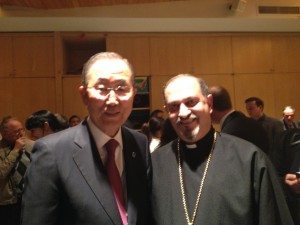From June 29 to July 6, St. Gregory of Datev Institute held its 28th annual Summer Program for youth, ages 13-18, at the St. Mary of Providence Center in Elverson, Pa., with the participation of 41 students and 20 clergymen and lay leaders, under the auspices of His Eminence Archbishop Oshagan, the Prelate of the Eastern Prelacy of the Armenian Apostolic Church of America.
![Faculty, staff, and participants of the 2014 St. Gregory of Datev Institute Summer Program]()
Faculty, staff, and participants of the 2014 St. Gregory of Datev Institute Summer Program
The institute offers a unique Christian educational program for youth to enrich their knowledge of the Christian faith in a wholesome and nurturing environment, coupled with recreational activities and daily worship and prayer services. Sponsored by the Prelacy’s Armenian Religious Education Council (AREC), the weeklong program this year was directed by Archpriest Fr. Antranig Baljian, the pastor of St. Stephen’s Armenian Apostolic Church of Watertown, Mass.
The curriculum is designed to be completed in four weeks (one week each summer). The students who complete the curriculum have the option to return for post-graduate classes. The classes take place concurrently, about 25 50-minute sessions for each level. Graduates of the institute receive more than 100 hours of instructions in the elements of the Christian faith—what we believe, how we celebrate our faith, ways to nurture our faith, how we should live our faith as children of God—all discussed in the context of Armenian Church life and traditions.
Each day began with the students attending a Morning Service at 7:15 a.m., followed by breakfast and then four sessions until 12:30 p.m., when they broke for lunch. In the afternoon, the students enjoyed recreational activities, such as soccer, bowling, basketball, volleyball, and swimming. After dinner, classes resumed from 7-9 p.m., and the day closed with the Compline Service (Husgoom) from 9:45-10:15 p.m. Indeed, an intensive schedule.
Although the program is very demanding, most students embrace the daily schedule, though not without first moaning and whining—“the classes and services are too long.” In any case, most students do love and appreciate the Datev Program. Here are some of their impressions, which echo the sentiments expressed by many participants (more posted on the Prelacy’s website).
“Datev is a once in a lifetime experience and I think everyone should attend at least once in their life.” (Ariana Kazanjian, second-year student)
“This program has changed my life in ways nobody will ever be able to comprehend. I love everyone here; they are like family.” (Rebecca Holmquist, third-year student)
“I made new friends… The classes were very informative and at the same time very fun. I definitely recommend people to come and grow in their faith.” (Sona Borekjian, first-year student)
![Archpriest Fr. Antranig Baljian, institute director, speaking to the fourth-level students.]()
Archpriest Fr. Antranig Baljian, institute director, speaking to the fourth-level students.
“My favorite part of Datev is the evening service. I love the meaning all the words hold. The classes are very informative and interesting. Datev is such an amazing experience. I am blessed to be given such an amazing opportunity to learn about my faith and culture and make lasting relationships and memories” (Deborah Agopian, third-year student)
“I liked the classes because they made me learn new things and they were interesting. The classes are also really fun. The free time is the best part; I get to play games and talk to my friends. I just can’t wait for the next year. I’m so excited.” (Nayri Asayan, second-year student)
“I have been coming to Datev for the last four years and throughout these years I’ve grown so much. I’ve made so many friends that I know will last a lifetime. I also have learned so much about my religion and heritage, which has helped shape the person I have become. I’m so grateful to have been a part of Datev and soon be able to call myself a graduate.” (Emily Selverian, fourth-year student)
The instructors of the institute this year were His Grace Bishop Anoushavan Tanielian (vicar general), Fr. Antranig Baljian (institute director), Very Rev. Fr. Sahag Yemishian, Rev. Fr. Khoren Habeshian, Rev. Fr. Gomidas Baghsarian, Rev. Fr. Sarkis Aktavoukian, Rev. Fr. Hovnan Bozoian, Rev. Fr. Mesrob Lakissian, Rev. Fr. Stephan Baljian, Dn. Shant Kazanjian (AREC executive director), Dn. James Haddad, Yn. Joanna Baghsarian, Maggie Kouyoumdjian, and Jeanette Nazarian. The institute was privileged once again to have Fr. Paul Tarazi as a guest lecturer, a professor of Biblical studies and languages at St. Vladimir’s Orthodox Theological Seminary who has authored numerous books.
The Datev Summer Program concluded on Sun., July 6, with the celebration of Soorp Badarak at St. Gregory the Illuminator Armenian Apostolic Church of Philadelphia by Very Rev. Fr. Zareh Sarkissian, followed by a luncheon hosted by the Artemis Chapter of the Armenian Relief Society (ARS).
Words of appreciation
The Datev Summer Program is made possible through the collaborative efforts of the Armenian Prelacy, clergy, and lay instructors and leaders, parishes, parents, and a number of organizations and individuals. The institute is grateful to the instructors for their labor of love, and the parents for entrusting their children for a week of spiritual and religious formation. The institute expresses its gratitude to the following individuals for their invaluable services as supervisors and counselors: Dn. Harout Takvorian, Dn. Bedros Kalajian, Dn. James Haddad, Maral Doghramadjian, Maggie Kouyoumdjian, Tamar Lakissian, and Jeanette Nazarian.
The institute also extends its appreciation to Mr. and Mrs. Hagop and Ica Kouyoumdjian for their generous donation, to those parishes that subsidized a portion of the expenses by providing scholarships to church-server participants, to the Pashalian Family Education Fund, and to the following for their generous support and donations: the Prelacy Ladies’ Guild (PLG), the National Association of Ladies’ Guilds (NALG), Sts. Vartanantz Sunday School (New Jersey), and the “Artemis” Chapter of the Armenian Relief Society (Pennsylvania). Thanks also to the following donors: Mr. and Mrs. Ohanes Chamavonian, Gharibian Farmers, Inc., Asdghig Kazanjian, Dr. and Mrs. Vahan Kouyoumdjian, Mr. and Mrs. Noubar Megerian, and Mr. and Mrs. George Semerjian. A special thanks to the pastor and board of trustees of St. Gregory the Illuminator Armenian Apostolic Church of Philadelphia for their hospitality.
The post Eastern Prelacy Sponsors 28th Annual Datev Institute Summer Program appeared first on Armenian Weekly.
